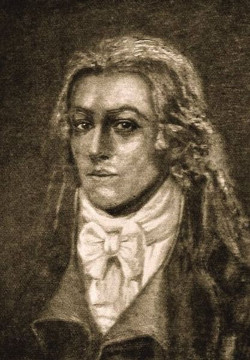
In 1913 J.N. Muncey of Jessup, Iowa, showed that the first 144 odd prime numbers (counting 1 as prime) can be arranged into a magic square.
Each row, column, and long diagonal totals 4514.

In 1913 J.N. Muncey of Jessup, Iowa, showed that the first 144 odd prime numbers (counting 1 as prime) can be arranged into a magic square.
Each row, column, and long diagonal totals 4514.

The HMS Effingham was sunk with a pencil. On May 18, 1940, the Royal Navy cruiser was escorting a troop convoy near Bodø, Norway, when she struck a large rock and had to be scuttled. The rock was well known and appeared on the ship’s chart, but the navigator had obscured it with a pencil line in drawing the ship’s passage on the map, and she ran directly onto it.
No one was killed; the crew were evacuated and an accompanying destroyer finished her with a torpedo.
(Thanks, Alex.)
Speakers of the Kuuk Thaayorre language, spoken by the Thaayorre people in Queensland’s Pormpuraaw settlement, use absolute cardinal directions (north, south, east, west) rather than relative spatial terms (left, right), even at small scales. So, for example, they would say, “The cup is southeast of the plate” or “The boy standing to the south of Mary is my brother.”
In 2010, University of California psychologists Lera Boroditsky and Alice Gaby gave Kuuk Thaayorre speakers sets of cards depicting temporal progressions — a man aging, a crocodile growing, a banana being eaten — and asked them to arrange the shuffled cards on the ground to indicate the correct temporal order.
English speakers arrange the cards from left to right, Hebrew speakers from right to left. But the Kuuk Thaayorre arranged them from east to west, regardless of the direction the subjects themselves were facing.
Among other things, this means that the Kuuk Thaayorre must be constantly aware of their orientation in the world. “We never told anyone which direction they were facing,” Boroditsky wrote later. “The Kuuk Thaayorre knew that already and spontaneously used this spatial orientation to construct their representations of time.”
(Lera Boroditsky, “How Language Shapes Thought,” Scientific American 304:2 [February 2011], 62-65.)

Verbatim from the FBI’s “most wanted” website:
Former Ten Most Wanted Fugitive #236: On March 29, 1967, [James Robert] Ringrose was apprehended in Osaka, Japan, by Japanese police while attempting to pass bad checks. He was arrested in Hawaii after his return to the United States from Japan. He told the FBI agents he had been saving an item for several years and now he needed it. He then presented them with the Monopoly game card, ‘Get out of jail free.’
I’m pretty sure they’d have to honor this, wouldn’t they? It’s in the rules.

Give a hundred people a picture of the earth, identify the North Pole for them, and a hundred will hold the photo with the North Pole toward their head and the South Pole toward their feet. Of course, what they are really doing, if they are standing up, is pointing the South Pole at the center of the earth and, if they are standing at the equator, pointing the North Pole at some spot in the sky, which, as the earth turns, traces a circle intersecting the plane of the ecliptic at 23 1/2 degrees. Now why people persist in this foolishness I don’t know. In my living room I have a small framed photograph showing a thin crescent against a black background. Even though the colors are wrong, people always say, ‘Oh, the moon!’; but it is the earth. The earth isn’t ever supposed to be a crescent, I suppose.
— Astronaut Michael Collins, Carrying the Fire, 1975

stridulous
adj. emitting a particularly harsh or shrill sound
tumultuary
adj. restless; agitated; unquiet
emportment
n. a fit of passion; anger, fury
bangstry
n. masterful violence
Of the numerous war scenes in operas of all ages, it is worth noting one in particular for its extraordinary tempo marking. The opera Sofonisba (1762) by Tommaso Traetta (or Trajetta) opens with a battle scene in which two oboes, two horns (pitched in C and D respectively), and a string band are instructed to play ‘Allegrissimo e strepitosissimo,’ literally, ‘very joyfully and with much animation and gaiety and extremely noisily and boisterously.’
— Robert Dearling, The Guinness Book of Music Facts & Feats, 1976
The French constrained writing group Oulipo refers to the “Canada Dry principle” — the color, name, and bottle design of that ginger ale would lead you to think it’s alcoholic, but it’s simply not. Similarly, “falindromes” are expressions that appear to be palindromes but aren’t:
O, gin, need a dingo?
So cats taste staccato tacos?
Ray, eat a ripe pirate tea. YAR!!
Mime Eminem.
A-hah! A banana ban. Haha!
“I, a CD-ROM?!” ribbed a bearded Mordcai.
A brazen zebra.
Pandas tired diet? A sad nap.
I am mad at a Canada dam, Mai!
These are from an extinct 2008 blog created by Amir Blumenfeld; there was also a short-lived Twitter account (“Able sidlers race cars, Idris Elba!”).
A working palindrome, by Stephen Fry:
Rettebs iflahd noces, eh? Ttu, but the second half is better.
Samuel Johnson used to boast that his memory was so prodigious that he could recite an entire chapter of Niels Horrebow’s 1758 Natural History of Iceland. When challenged he would declaim:
Chap. LXXII. Concerning Snakes
There are no snakes to be met with throughout the whole island.
That’s it. Editor George Birkbeck Hill adds, “Chapter XLII is still shorter:–
Concerning Owls.
There are no owls of any kind in the whole island.

In 1932 a quartet of Bronx gangsters set out to murder a friend of theirs in order to collect his life insurance. But Michael Malloy proved to be almost comically difficult to kill. In this week’s episode of the Futility Closet podcast we’ll review what one observer called “the most clumsily executed insurance scam in New York City history.”
We’ll also burrow into hoarding and puzzle over the value of silence.

During World War II the poet Robert Lowell refused to register for the draft and spent a few days in the West Street Jail next to mobster Louis “Lepke” Buchalter.
Lepke told him, “I’m in for killing. What are you in for?”
Lowell said, “I’m in for refusing to kill.”